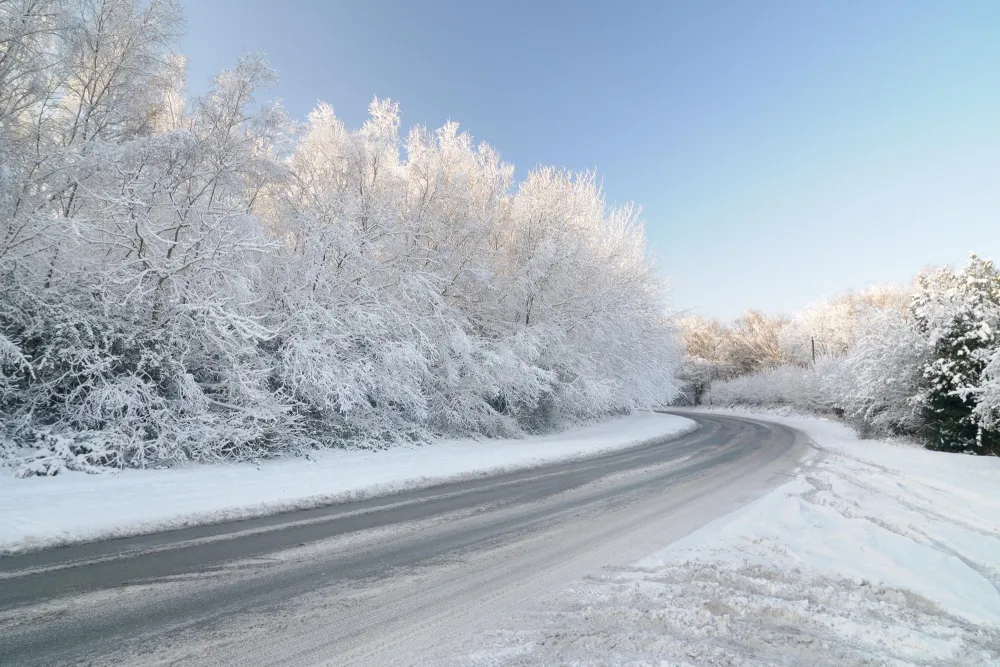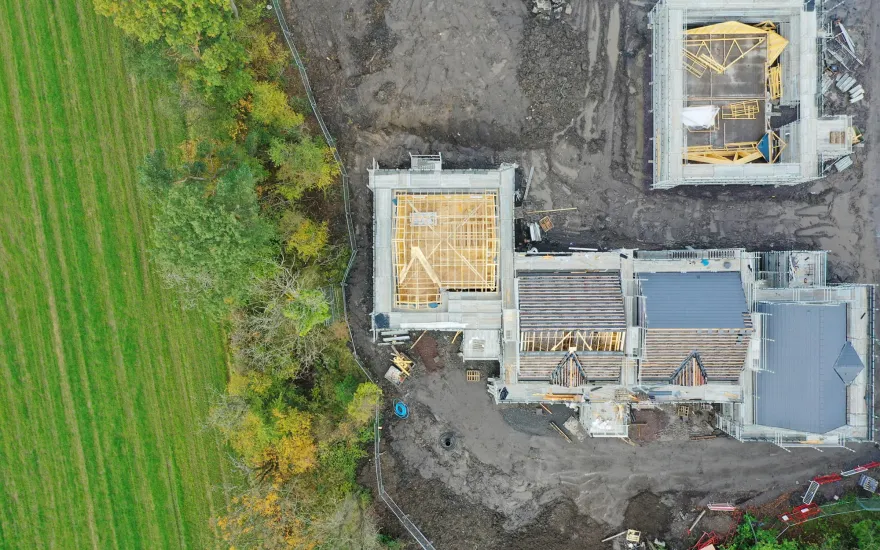Now live: The 2025 Canopy Report. Learn how Americans see trees. GET THE REPORT
Bulletin
How to Create a Living Snow Fence
Blowing and drifting snow from winter storms creates snow drifts that can close roads, block driveways, and endanger unprotected livestock. One of the best ways to alleviate these problems is to plant a living snow fence — rows of trees and shrubs planted to keep snow off roads and access drives.

An idea proven by time Living snow fences were first planted in the early 1900s to protect railroad lines and major highways. Many of these trees are still providing protection today.
Living Snow Fences Help …
Save Energy, Increase Safety
Tree plantings can protect roads from drifting snow, reducing snow removal costs and related energy costs and making them safer for winter driving.
Store Snow at Low Cost
A living snow fence can capture up to 12 times more snow per foot of height than a slatted or picket fence but are up to 90% cheaper to install and maintain than slatted snow fences.
Provide Wildlife Habitat
Living snow fences provide a home for many wildlife species. A combination of trees, shrubs, and native grasses provides excellent wildlife habitat.
Improve Landscape Aesthetics
More aesthetically pleasing than slatted snow fences, living snow fences create attractive woodlands that enhance land values and provide natural beauty.
“Harvest” Water
By placing a living snow fence on the windward side of a water hole in semiarid rangelands, a large snowdrift can be collected that will help fill the pond the following spring.
Protect for Many Years
Living snow barriers can have a service life of up to 75 years. After satisfactory root growth is established, they need little maintenance beyond occasional removal of dead or damaged branches.
How to Design a Living Snow Fence
ORIENT your living snow fence at right angles to prevailing winter winds.
HEIGHT: Doubling the height will more than quadruple the amount of snow captured.
DENSITY: Studies show that vegetation with about 50% density will capture and store the greatest amount of snow.
MINIMUM DISTANCE:
- 200 feet in open country with snowy winters.
- 100 feet in areas with natural obstructions or less snowy winters.
ROADS protected by a well-designed living snow fence are less likely to have snow drifts.
Planting a Living Snow Fence
Species to Plant
Select species that are native to your area or adapted to local soils, climate, and growing conditions. Evergreens are ideal because of their height and year-round foliage, but many deciduous shrubs work well, especially in combination with evergreens.
Rows and Spacing
Consider average annual snowfall in your area when determining the number of rows to plant. Spacing between rows is based on crown width, but leave enough space for equipment to pass between rows, if necessary. Within a row, use relatively close spacing between trees and/or shrubs. For example, 6 to 8 feet between junipers and cedars, and 10 to 12 feet between pines and spruce is often recommended.
Helping Seedlings Survive
In moist climates, survival of trees and shrubs is usually not a problem. If annual precipitation is less than 22 inches, irrigation or other soil moisture conservation methods will be needed. Summer fallowing (keeping the planting area free of vegetation the year before planting) helps give seedlings a better start. Keep livestock away from your living snow fence and use mulch or landscape fabric to conserve water and help control weeds.
